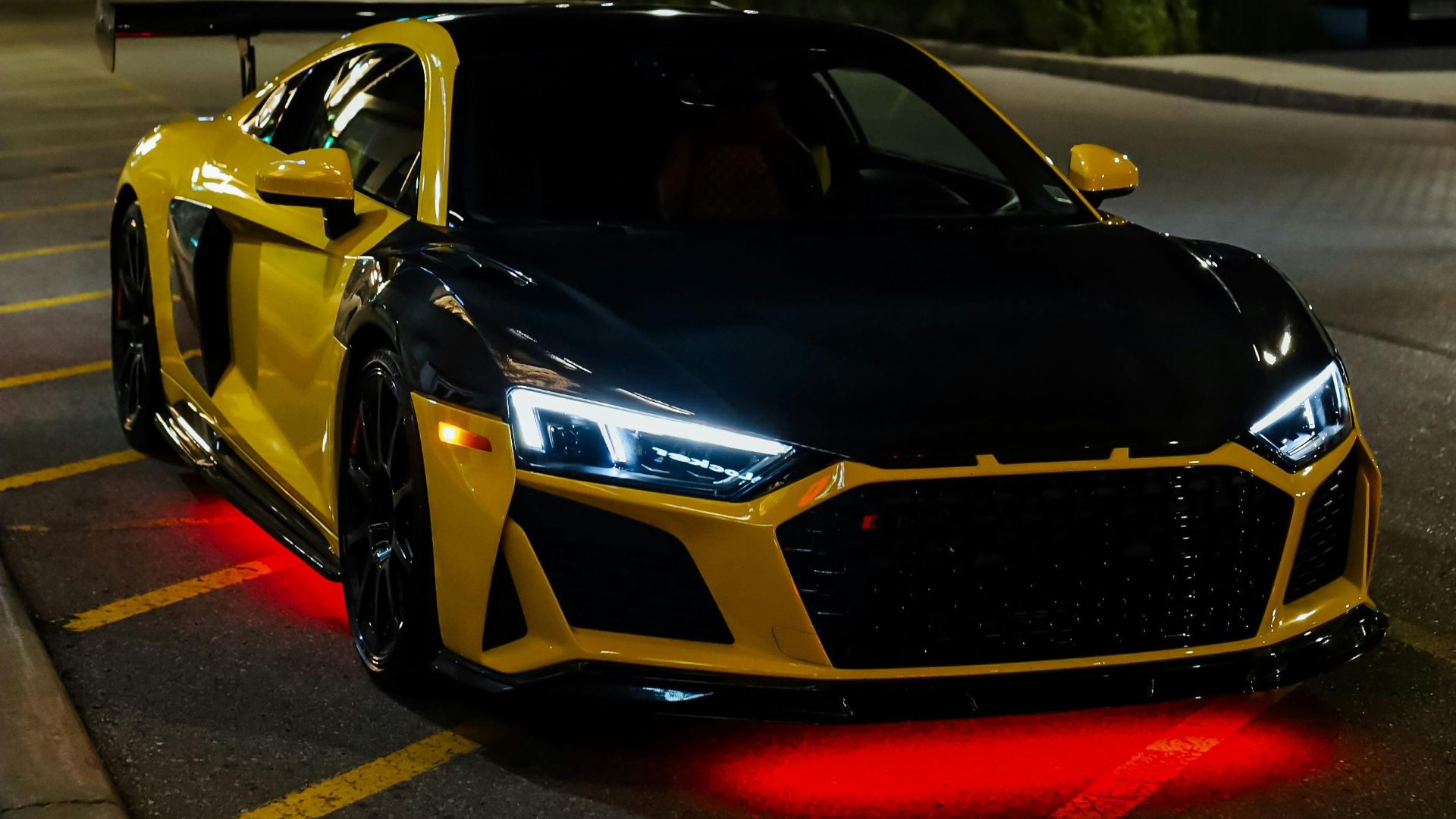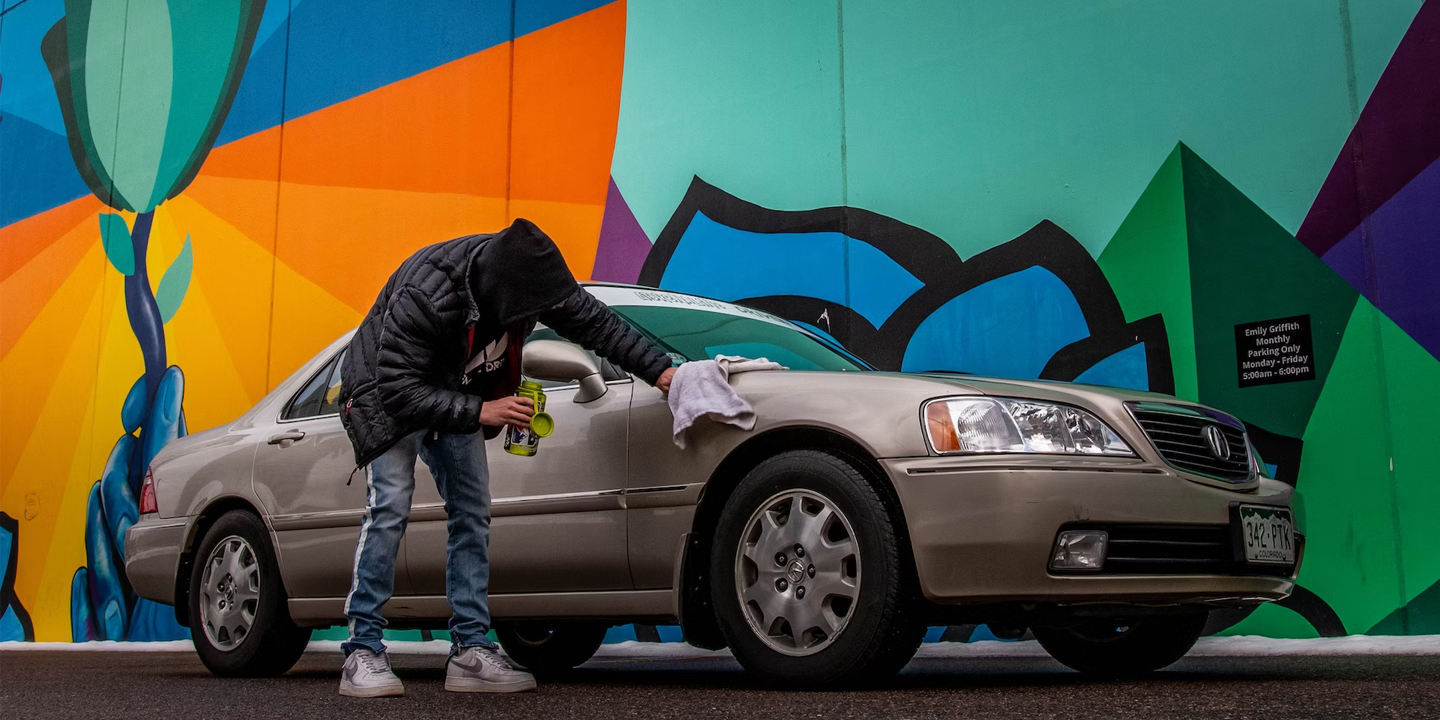Epic Mods That Aged Poorly
The early 2000s were a playground for bold car enthusiasts chasing attention on the streets and at shows. Every driveway seemed to feature a daring upgrade that attempted to transform ordinary rides into head-turning machines. Two decades later, many of those once-celebrated touches feel more laughable than legendary. Want to see which throwback 2000s mods failed the test of time? Here are 20 of the worst examples.
1. Oversized Chrome Rims
Looking at them now, oversized chrome rims feel almost cartoonish. Yet in the early 2000s, they were the crown jewel of hip-hop car culture. Their sheer size even wrecked comfort, killed efficiency, and added weight. They’ve aged into heavy embarrassments today.
2. Neon Underglow Lights
After watching The Fast and the Furious, many moviegoers were inspired to install neon lights under their cars. The lights may have turned heads, but they drained batteries and cracked only after a few months. The rules on legality also differed by state, adding more hassle. Now they are seen as tacky rather than stylish.
3. Spinning Rims (Spinners)
Spinners exploded after hip-hop videos showcased them in the early 2000s. They added weight to wheels and stressed bearings, which caused awkward wobbles. The flashy rims only ended up costing a fortune while improving nothing.
4. Carbon Fiber Stick-On Panels
Fake carbon fiber wraps that promised race-car cool usually delivered bubbles and peeling corners. The weave looked closer to cheap wallpaper than high-tech material. Anyone who covered their dashboard with it may as well have hung a “try-hard” sign across the windshield.
 How To Carbon Fiber Vinyl Wrap Car Interior Trim | Exterior B-Pillar by Color Change Customs
How To Carbon Fiber Vinyl Wrap Car Interior Trim | Exterior B-Pillar by Color Change Customs
5. Widebody Kits Without Performance
Widebody kits looked aggressive at first glance, copying track-built machines. Unfortunately, poor installations left cracks at joints, while oversized arches often swallowed tires that never fit properly. The added weight offered no handling benefit, so many cars looked permanently stuck halfway between racing dream and garage project.
6. Huge Aluminum Wings
A Civic with a towering aluminum wing might have drawn stares in 2003, but not for the right reasons. The bolts added no street-level performance. Instead, they left cars mismatched and exaggerated. Today, that same sight makes drivers laugh rather than respect any supposed speed.
7. Excessive Vinyl Decals
Racing games and tuner culture fueled the obsession with vinyl flames, tribal streaks, and oversized graphics. Full-body wraps even clashed with factory paint and body lines. The flashiest cars sometimes looked more like rolling sticker books than performance machines.
8. Altezza Taillights
Altezza taillights once seemed futuristic when the Lexus IS300 introduced them in 1998. This led to clear housings with chrome guts that quickly hit every aftermarket shop. Civics and Eclipses wore them proudly, until cheap sets began leaking and fogging.
9. Hood Scoops On Non-Turbo Cars
Nothing gave away a poser faster than a fake hood scoop. Copying Subaru and Mitsubishi designs, owners glued on plastic pieces that cracked and added zero power. They promised aggression but delivered nothing. Those scoops didn’t fool anyone then, and they certainly don’t now.
 Lipton sale at English Wikipedia on Wikimedia
Lipton sale at English Wikipedia on Wikimedia
10. Massive Subwoofer Boxes
Car trunks in the 2000s sometimes disappeared under towering subwoofer boxes. The setups rattled panels loose and filled cabins with overwhelming bass. They also left no space for luggage. While owners loved showing off, thieves noticed too, so they attracted the wrong kind of attention.
 Jpogi at Wikipedia on Wikimedia
Jpogi at Wikipedia on Wikimedia
11. Euro-Style Clear Headlights
Clear headlights were meant to give everyday cars a European edge. Instead, they scattered light so badly that night driving felt risky. The bargain versions yellowed faster than a forgotten banana, which left owners scrambling back to factory lamps just to drive safely again.
12. Brightly Painted Interiors
Neon dashboards and trim spread quickly in the 2000s, often sprayed on with little care. So, scratches and chips appeared almost immediately, and colors rarely matched factory paint. Instead of enhancing style, the effect made cars resemble arcade cabinets rolling awkwardly through everyday traffic.
13. Lambo-Style Vertical Doors
Vertical doors always looked right on a Lamborghini, but slap them on a compact sedan and the magic vanished. Expensive kits sometimes failed, leaving hinges crooked and panels misaligned. What once felt daring turned into spectacle. Today, the style’s more punchline than performance upgrade.
 Alexandre Prévot from Nancy, France on Wikimedia
Alexandre Prévot from Nancy, France on Wikimedia
14. Fake Hood Vents
Auto parts stores sold stick-on hood vents that promised race-inspired style. They offered zero airflow, no cooling, and no performance. Owners ended up with peeling plastic that screamed “cheap.” Enthusiasts still swap stories about spotting the worst offenders parked at grocery stores or strip malls.
15. Body Kits With Extreme Ground Effects
Tuner magazines showcased extreme body kits, and enthusiasts rushed to copy the look. However, fiberglass cracked at the first encounter with a speed bump. Gaps and uneven fitment even exposed a rushed installation. The “extreme” label usually described the repair bills more than the styling.
16. Fake Turbo Whistles
Drop a $10 insert into an exhaust, and suddenly the car “whistled” like it had a turbo. The trick didn’t last long—plastic melted, metal snapped, and the fake sounds fooled nobody. Drivers expecting respect usually got laughter once the gimmick sputtered out.
 10$ AMAZON Turbo Exhaust Whistle VS Ram 1500!! (Does It Work??) by Cash Skarda
10$ AMAZON Turbo Exhaust Whistle VS Ram 1500!! (Does It Work??) by Cash Skarda
17. Huge Exhaust Tips
Some drivers thought exhaust tips the size of soda cans would look fierce. Instead, they droned like broken trumpets and often rusted off within months. On compact cars, those giant pipes felt less intimidating upgrade and more comedy prop, the kind that guaranteed double takes.
 The original uploader was Steevven1 at English Wikipedia. on Wikimedia
The original uploader was Steevven1 at English Wikipedia. on Wikimedia
18. Undersized Donut Steering Wheels
Tuner culture embraced tiny donut steering wheels for a “race-ready” vibe. In reality, they robbed drivers of leverage, making turns awkward and heavy. Safety wasn’t better either—many had no airbags and cracked under stress. The flashy look actually left cars more dangerous than stylish.
 The Evolution of F1 Steering Wheels by Donut
The Evolution of F1 Steering Wheels by Donut
19. Headlight Eyelids
Nicknamed “eyebrows,” headlight eyelids gave cars a sharper, almost scowling look. They appeared in finishes from matte plastic to carbon fiber versions. Civic owners especially loved them, even though visibility never improved. The accessory became a style divider, celebrated by some and dismissed as pointless by others.
20. Fake Badge Swaps
Some owners thought slapping on BMW, AMG, or Type R badges would upgrade their image. However, the glue rarely held, and the emblems peeled off after rain or car washes. Enthusiasts caught the deception instantly and roasted those fake upgrades relentlessly.





















